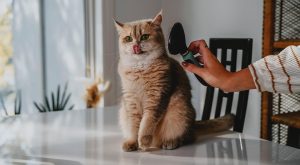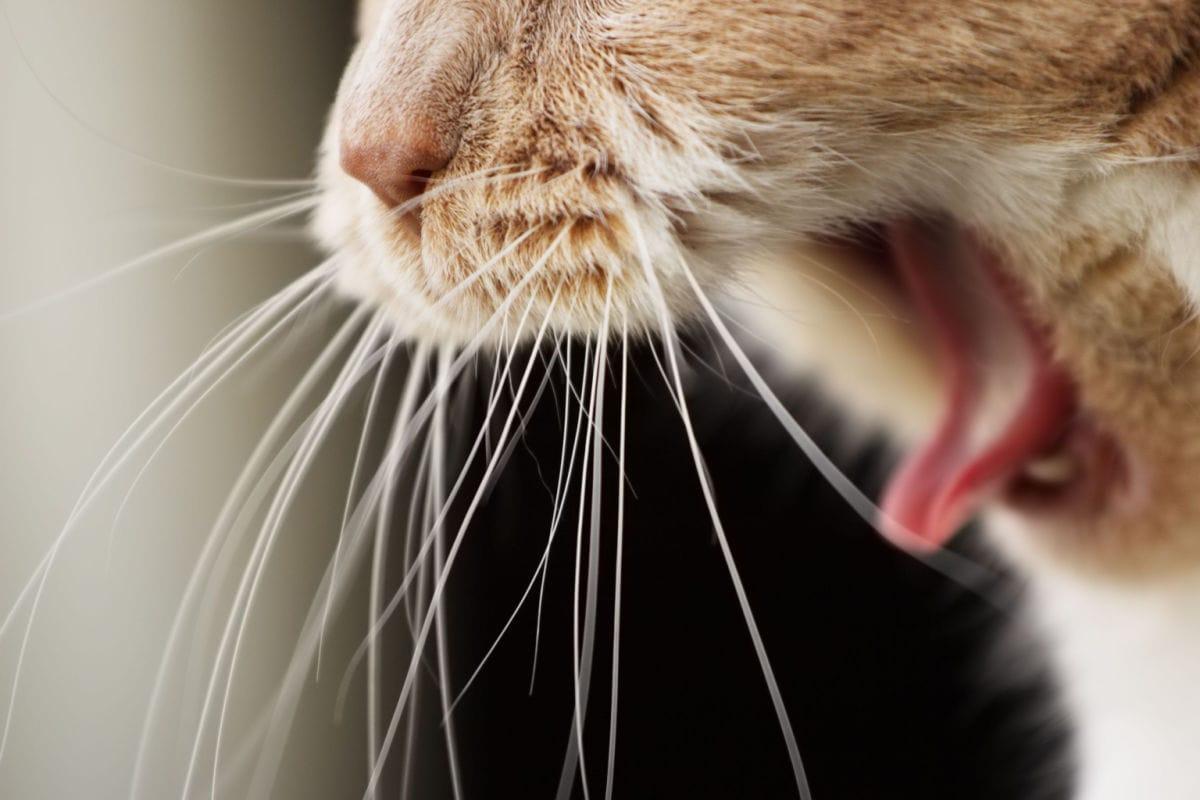groombuddies.com – Hairballs are a common issue for many cat owners. If you’ve ever found your cat hacking and coughing up a hairball, you know just how unpleasant it can be. Not only is it messy, but it can also be a sign of an underlying issue in your cat’s health. Fortunately, there are effective ways to prevent cats hairballs before they become a constant problem. In this comprehensive guide, we’ll explore the causes of hairballs in cats, how to manage them, and the best practices for preventing them from happening in the first place.
Full Explanation About How To Prevent Cats Hairballs
Before we dive into how to prevent cats hairballs, it’s important to understand what hairballs are and why they occur. Hairballs, also known as “trichobezoars,” are clumps of fur that accumulate in a cat’s stomach after they groom themselves. Cats naturally shed hair, and when they lick their fur, they swallow loose strands. While some hair passes through the digestive system and is eliminated through the stool, other hair gets trapped in the stomach and forms a ball.
Most cats, especially those with longer fur, are more prone to hairballs. However, even short-haired cats can develop them if they groom excessively or have skin issues.
Common Causes of Hairballs in Cats
- Excessive Grooming: Cats groom themselves to keep clean, but some cats over-groom, especially if they are stressed or have skin conditions. This leads to the ingestion of more fur.
- Shedding: Seasonal changes and environmental factors can trigger increased shedding, which increases the amount of hair that needs to be groomed and swallowed.
- Long Fur: Cats with long coats, such as Persians or Maine Coons, are more prone to hairballs because their hair is harder to manage.
- Poor Diet: A poor diet lacking essential fatty acids, fiber, or vitamins can affect the skin and coat health of cats, leading to excessive shedding and hairball formation.
The Impact of Hairballs on Your Cat’s Health
While occasional hairballs are normal, excessive hairballs can lead to a range of health issues, including:
- Digestive Blockages: A large hairball can create a blockage in the digestive system, which may require veterinary intervention to resolve.
- Vomiting: Cats that suffer from chronic hairballs may frequently vomit, which can lead to dehydration and weight loss.
- Discomfort and Pain: The process of vomiting a hairball can be distressing and uncomfortable for your cat.
- Loss of Appetite: Cats with digestive issues or hairball blockages may lose their appetite or become lethargic.
To avoid these health issues, preventing hairballs is the best approach. Now, let’s look at how you can effectively prevent cats hairballs.
10 Best Tips on How to Prevent Cats Hairballs

1. Regular Grooming
The most effective way to prevent cats hairballs is through regular grooming. Brushing your cat’s coat frequently removes loose fur before your cat can ingest it. This is especially important for long-haired breeds, as their fur can become matted, leading to more shedding and hairball formation.
- How often? Aim for daily grooming for long-haired cats and at least two to three times a week for short-haired cats.
- Tools to use: Use a slicker brush, comb, or grooming glove. For long-haired cats, a de-shedding tool can be very helpful.
2. Provide a Healthy Diet
A well-balanced diet is crucial for your cat’s overall health, including its skin and coat. Diets that are rich in omega-3 fatty acids, protein, and fiber can help reduce shedding and improve the quality of your cat’s fur.
- Look for high-quality cat food that contains healthy fats like fish oil or flaxseed, which help maintain a shiny, healthy coat.
- Fiber is important for digestion. Consider adding fiber-rich food or supplements to your cat’s diet to help hair move through their digestive tract more easily.
3. Hydration is Key
Keeping your cat hydrated is essential for preventing hairballs. When cats are dehydrated, their digestive systems don’t work as efficiently, which can cause fur to get trapped in the stomach. Make sure your cat always has access to fresh, clean water.
- Automatic water fountains can encourage cats to drink more water since they are often more attracted to moving water.
4. Use Hairball-Specific Cat Food
There are cat foods specifically formulated to help prevent cats hairballs. These foods usually contain a special blend of fibers that help move hair through the digestive tract and prevent it from accumulating in the stomach. Hairball-control foods also help reduce shedding and promote a healthier coat.
5. Hairball Remedies and Supplements
Several hairball remedies and supplements can be helpful in preventing hairballs. These include lubricating pastes, gels, or treats that help hair pass through your cat’s digestive system.
- Lubricants like Vaseline or commercial hairball gels can be given to your cat in small amounts to help prevent hairball formation.
- Fiber supplements such as psyllium or pumpkin can also improve digestion and help prevent hairballs.
6. Reduce Stress and Anxiety
Stress is a common trigger for excessive grooming in cats, and when a cat grooms too much, they are more likely to swallow more hair. Reducing stress and creating a calm environment for your cat can significantly reduce excessive grooming behavior.
- Provide plenty of playtime, interactive toys, and a quiet space where your cat feels safe.
- Ensure there are enough resting spots and hideaways to give your cat a sense of security.
7. Regular Vet Checkups
Sometimes, hairballs are a sign of an underlying health issue, such as a skin condition or digestive disorder. Regular vet checkups can help identify any medical problems early on, ensuring that your cat remains healthy and that hairballs are not a symptom of something more serious.
- Consult your vet if you notice that your cat is frequently vomiting hairballs, or if they are showing signs of discomfort or distress.
8. Provide a Proper Litter Box
Stressful or unclean litter boxes can cause anxiety and increase grooming behavior. Keep your cat’s litter box clean and ensure that it’s placed in a quiet, safe area.
9. Monitor Your Cat’s Weight
Overweight cats tend to groom less efficiently and may ingest more fur as they attempt to clean themselves. Ensuring that your cat maintains a healthy weight through proper diet and exercise can reduce their tendency to develop hairballs.
- Play with your cat regularly and provide opportunities for them to move around and stay active.
10. Keep Your Cat Indoors
Outdoor cats may ingest more fur, especially if they roll around in dirt or vegetation. Keeping your cat indoors can reduce their exposure to hairballs caused by environmental factors and may also reduce their overall shedding.
Groom Your Cat with Groom Buddies!
For cat owners looking for professional grooming solutions, Groom Buddies is the place to be. Our expert groomers understand the unique needs of your feline friend and provide gentle, thorough grooming sessions that help reduce shedding, prevent hairballs, and keep your cat looking and feeling their best. Whether it’s a routine grooming session or a special hairball treatment, Groom Buddies has got you covered.
Book an appointment today and give your cat the care they deserve. Let us help you keep your pet comfortable and healthy, all while minimizing those pesky hairballs!

